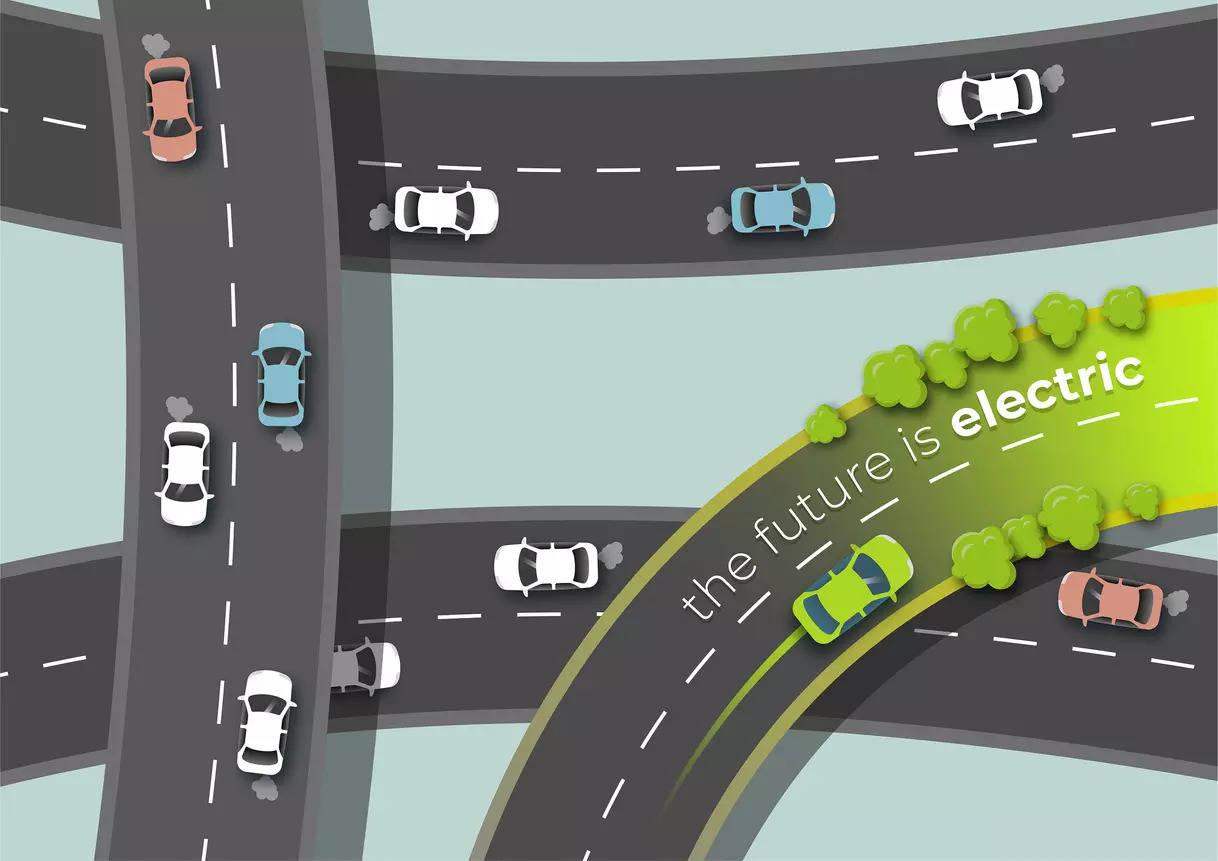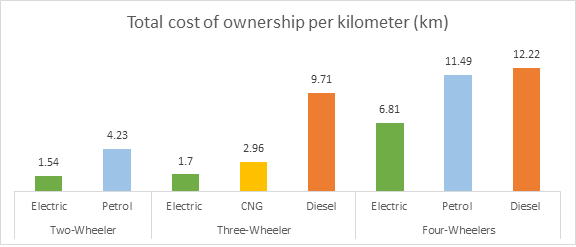
By HM Shivanand Swamy and Nitish Arora
International experience shows that states and provinces can lead the global transition to electric vehicles (EVs). Quebec announced its plan to ban the sale of new gasoline vehicles several months before Canada’s announcement this summer. California, the largest US auto market, is moving to phase out internal combustion engine (ICE) vehicles from 2035, while the US is yet to set a date.
Gujarat is leveraging its strength as a growing automobile (auto) hub to accelerate the global shift to EVs. Transitioning from fossil-fuel driven ICE vehicles to EVs is essential to prevent the worst effects of climate change across India. Gujarat is vulnerable to extreme climate and weather events, particularly as a coastal state. There is no time for the state to waste to implement its EV policy, which was released in June.
Gujarat is not the first state to release an EV policy. However, it is distinct due to its powerful manufacturing capacity. One out of every three passenger cars made in India is manufactured in the state. Gujarat’s EV policy, together with its industrial policy, provides a big boost to the state’s powerful manufacturing capacity and signals a new chapter in India’s transition to EVs.
Gujarat has also a unique opportunity to move from zero tailpipe emissions to zero operating emissions. The state can leverage its growing renewable energy capacity, likely to touch 12,000 MW, to power its EVs. The state EV policy aims to support electrification of 200,000 vehicles and 250 charging stations over the next four years. It will provide financial support to vehicle buyers, developers of charging infrastructure, and EV manufacturers. By offering lucrative incentives, startups are encouraged to develop new EV variants and operation models. Compared to other state EV policies, Gujarat offers the most aggressive demand side incentives, making EVs ultra-affordable. This leads to a significant reduction in the upfront capital cost to buy an EV, as well as in the total cost of ownership (TCO).

Prior to formalizing its state EV policy, Gujarat leveraged incentives provided under the Faster Adoption and Manufacturing of Electric Vehicles (FAME) scheme and initiated state-level programs. However, the state only made limited headway in shifting to electric mobility, as high upfront price remained a barrier to widespread EV adoption.
EVs made ultra-affordable
FAME and the state subsidies together make the upfront costs of electric two and three-wheelers comparable with their ICE counterparts and in many cases 10% to 20% cheaper than them. The value proposition gets even better terms of TCO. The TCO for electric two and three-wheelers improves by 60% and 20% respectively, versus petrol two-wheelers and compressed natural gas (CNG) autos. For the four-wheeler, the TCO improves by 35% in commercial use cases and becomes comparable in private use cases to their ICE counterparts.
In order to gauge the consumer interest what Gujarat has done is double down the amount of subsidy on EVs than any other state on a per kWh basis (move which has been followed by the north eastern states as well). It not only makes EVs ultra-affordable but also provides EV manufacturers with the opportunity to bring in the scale effect. Further it allows EV OEMs to introduce diverse product ranges so that consumers have more options to choose from. While the incentives offered in the Maharashtra EV policy, in certain instances, are less than those offered by Gujarat, there are certain ‘early bird incentives’ placed to catalyse the adoption process.
Make in Gujarat and Make for the world
The state’s EV journey appears promising, as Gujarat becomes a preferred destination for Indian and foreign auto firms looking to set up a battery Giga-factories. Notable conglomerates include Nexcharge, Reliance, Tata Group, Maruti, and startups such as Lohum. Gujarat is currently preparing more major reforms to accelerate EV adoption. It announced plans for the city of Kevadia, home to the world’s tallest statue, the Statue of Unity, to become the first EV city in the country.
The EV policy is poised to make Gujarat a hub for EV manufacturing and a global powerhouse, investors can capitalize and leverage the land resources at Adani Ports and Special Economic Zone (APSEZ) in Mundra for championing export markets. APSEZ operates the largest commercial port and SEZ at Mundra. SEZs are designated duty-free enclaves where the Indian customs law does not apply; providing a big boost to the local ecosystem to flourish.
Implementation is the key
Having laid the foundation, Gujarat cannot afford to lose momentum and should establish adequate checks and balances for effective EV policy implementation. The state should consider constituting inter-departmental committee and working groups to periodically monitor the progress and address challenges encountered. Also, a single window clearance process would ensure EV projects are implemented in a time bound manner, minimizing delays.
Having released a robust policy, Gujarat now needs to ensure effective coordination between city administrations, industry stakeholders, and various state government agencies like transport department, energy department, urban development department, electricity commission, city administration, distribution companies (DISCOMs).
The state can galvanize support for policy implementation and industry collaboration by facilitating pilot projects across various use cases. This would not only help early adopters but also create more visibility for EVs. The state government should consider electrifying its fleet; to start with it should ensure that all new vehicle purchases/hires are electric to (1) create demand for original equipment manufacturers (OEMs) and charge point operators, and (2) create confidence and raise public awareness about EVs among the masses.
The state needs to increase the deployment of charging infrastructure to address range anxiety. The state should establish a program for power utilities to prepare for and embrace EVs~
Additionally, the state needs to increase the deployment of charging infrastructure to address range anxiety. The state should establish a program for power utilities to prepare for and embrace EVs. Utility involvement can greatly facilitate the process of setting up charging infrastructure. To address EV drivers’ concern over range anxiety the state needs to carry out awareness campaigns and emphasize charging infrastructure. Gujarat Energy Management Institute (GERMI) and Bureau of Energy Efficiency recently hosted a “Go Electric” Campaign to educate the public.
Setting up low emissions zones is another initiative that the state government can use to promote EVs. Low emissions zones are becoming an effective way to address poor urban air quality and have been implemented in several cities in Europe and Asia. An adequate amount of skilled labour must support Gujarat for it to accomplish its EV goals. The state should emphasize building state-of-the-art research, training, and development infrastructure in collaboration with industry and academia. Gujarat’s swift transition to EVs can help unlock this billion-dollar EV opportunity and drive green economic recovery in the post-COVID-19 world by creating thousands of jobs and livelihood opportunities.
Disclaimer: This article is jointly written by Prof. HM Shivanand Swamy, CEPT University, and Nitish Arora, an electric mobility and clean energy expert working with NRDC India. Views expressed are their own.














